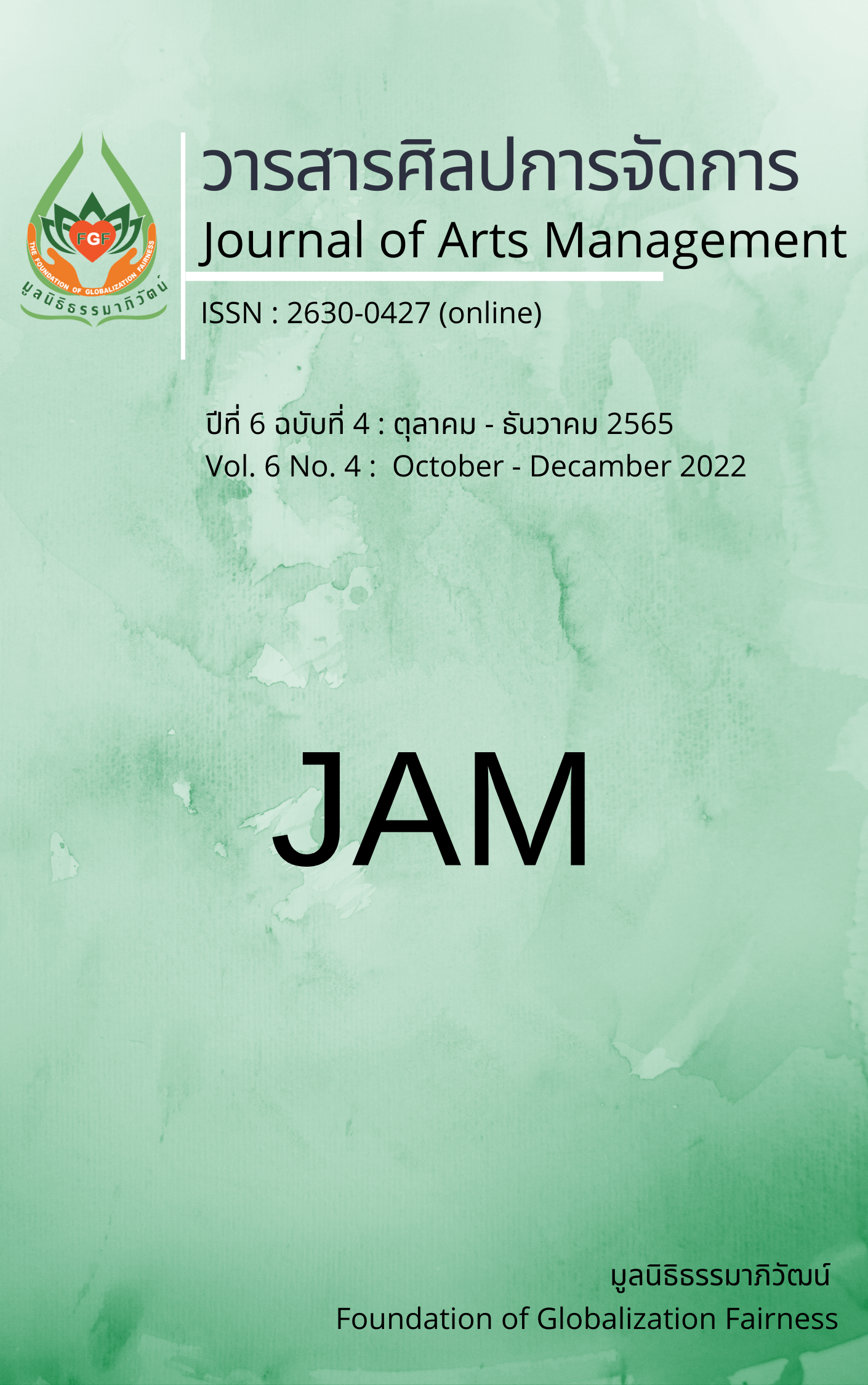A Successful Encouragement in the Vipassana Meditation Practice According to the Sappaya Principle
Main Article Content
Abstract
This article aimed 1) to study the practice of Vipassana meditation in the Buddhist scriptures; 2) to study the practice of Vipassana according to the Sappaya principle; and (3) to provide guidelines for promoting the practice of Vipassana according to the Sappaya principle. This research was qualitative research, analyzing document data using the 6'Cs technique and field research with an in-depth interview of 11 key informants. The findings of the research were as follows:
1. Vipassana meditation practice according to the Buddhist scriptures indicates foundations of mindfulness comprising of; 1) contemplation of the body, 2) contemplation of feelings, 3) contemplation of mind, and 4) contemplation of mind objects.
2. The sappāya principle whom encouragement to Vipassana meditation practice is that one who enters into practice (1) must have fewer burdens (2) not let day and night pass without any profit, (3) associate with fewer people, (4) hear of the Dhamma, (5) proficiency in-out meditation, (6) continuity practice with the Sappaya principle, (7) strengthen spiritual faculties, and (8) apply the suitable method of practice.
3. The encouragement of success in meditation practice with the Sappaya principle is that of the adjustment of the environment around practical places to suit meditation practice.
The way to the successful encouragement of meditation practice with the Sappaya principle according to Model 4–7–7 is concluded with meditation practice conformed to the four pillars of mindful contemplation, the seven Sappaya principles, and the seven successful encouragements. These are the advisable guidelines for meditation centers, the masters, and ordinary practitioners.
Article Details

This work is licensed under a Creative Commons Attribution-NonCommercial-NoDerivatives 4.0 International License.
Views and opinions appearing in articles in the Journal of Arts of Management It is the responsibility of the author of the article. and does not constitute the view and responsibility of the editorial team I agree that the article is copyright of the Arts and Management Journal.
References
Ananto, P. A. (2019). The study of enlightenment in Theravada Buddhism[Master’s Thesis, Mahachulalongkornrajavidyalaya University].
Buakaew, P. S., WongKaew, P. B., & Ploychum, S. (2021). Abhisamãcãra: Personality development process according to Buddhism. Journal of Arts Management, 5(3), 895–907.
Chaturanon, A. (2016). A study of the knowledge and the understanding in the four Mahasatipaṭthana meditation practice of foreign practitioners. Journal of Buddhist Studies, 7(2), 72-81.
Dinnapanñño, P. L. (2017). The Management Model of Suitable Things in Dhamma Practice School Northeast Region Thailand. Journal of Graduate Studies Review, 13(3) 35.
Karunyawee, S. (2021). Management of educational institutions according to the principles of Sappaya VII in the new normal. Journal of Educational Management and Research Innovation, 3(2), 75–82.
Mahachulalongkornrajavidyalaya University. (1996). Thai Tripitakas. MCU Press.
Mahachulalongkornrajavidyalaya University. (2009). Thai Commentary Mahachulalongkornrajavidyalaya University edition. MCU Press.
Phra Brahmagunabhorn (P. A. Payutto). (2014). Buddhadhamma (40th ed.). Phlithamma.
Phra Brahmagunabhorn (P. A. Payutto). (2016). Buddhist dictionary. Foundation for Education for Peace.
Sayadaw, M. (1992). The Satipatthana Vipassana Meditation. Buddha Sasana Nuggaha Organization.
Somdet Phraphutthaghosajarn (P.A. Payutto). (2018). Dictionary of Buddhism (33th ed.). Phlithamma.
Somwongsa, P. Y., & Koomkrong, V. (2022). A study important principle in the Avijjaya Sutta that are to the practice of Vipassana Bhavana. Journal of Multidisciplinary in Humanities and Social Sciences, 5(2), 619–630.
Sutat, P., & Tongkratok, P. C. (2022). A study the principles in the Oramphakiya Sutta related in the enlightenment. Journal of Multidisciplinary in Humanities and Social Sciences, 5(1), 206–214.
Tan, C. C., & Damnoen, P. S. (2020). Buddhist Noble Eightfold Path approach in the study of consumer and organizational behaviors. Journal of MCU Peace Studies, 8(1), 1–20.
Umawichani, J., & Kanchana, N. (1997). Phra Pa: The philosophy of the forest monks of Phra Achan Man Bhuritatto. Thammasapha.
Yusamran, P. P., Thitipasitthikorn, P. P., Damnoen, P. S., Thienthong, P. B., Rattana-ngam, S., & Homchan, P. (2021). Conservative and inheritance of Atthami Bucha day for sustainable promotion tourism. Journal of Positive Psychology and Wellbeing, 5(3), 1400–1410.


